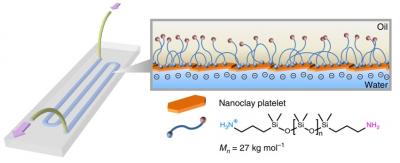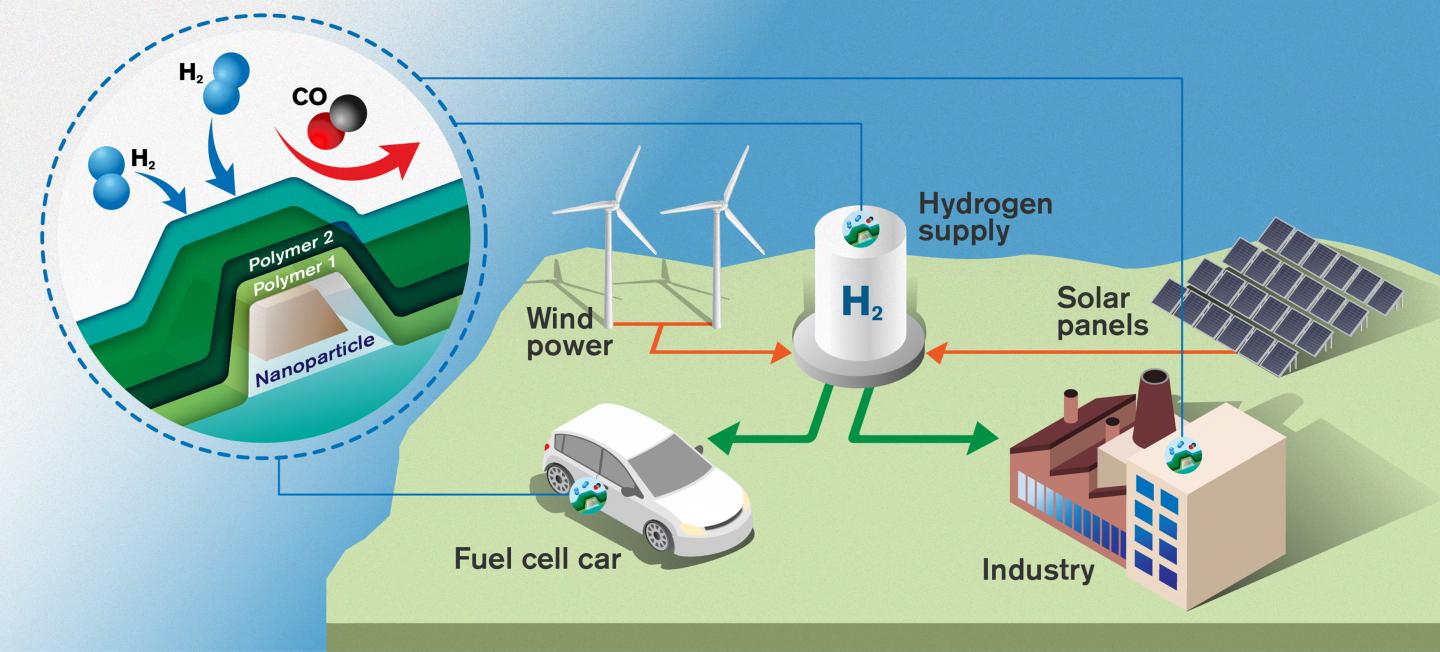
To make the 3D-printable fluidic device, Berkeley Lab researchers designed a specially patterned glass substrate. When two liquids - one containing nanoscale clay particles, another containing polymer particles - are printed onto the substrate, they come together at the interface of the two liquids and within milliseconds form a very thin channel or tube about 1 millimeter in diameter.

Large-scale simulations demonstrate that chaos is responsible for stochastic heating of dense plasma by intense laser energy. This image shows a snapshot of electron distribution phase space (position/momentum) from the dense plasma taken from PIC simulations, illustrating the so-called "stretching and folding" mechanism responsible for the emergence of chaos in physical systems.

Left) Schematic representation of the central part of the graphene-based THz photodetector device, containing the hBN-encapsulated graphene channel, on top of the narrow-gap antenna structure. By applying distinct voltages to the left and right antenna branches, a pn-junction is created in the graphene channel with unequal Seebeck coefficients on the left and right of the junction. Incident light is focused by the antenna above the gap, which is where the photoresponse is generated. (Right) Measurement of a THz focus, obtained by scanning the THz detector in the plane of the focus. The observation of several rings of the Airy pattern indicate the high sensitivity of the detector.

Fast and accurate sensors will be crucial in a sustainable society where hydrogen is an energy carrier. Hydrogen gas is produced by water that is split with the help of electricity from wind power or solar energy. The sensors are needed both when the hydrogen is produced and when it is used, for example in cars powered by a fuel cell. In order to avoid the formation of flammable and explosive gas when hydrogen is mixed with air, the hydrogen sensors need to be able to quickly detect leaks

Top panels: snapshots of the system at the temperature and at different times from start of crystallization: (a) glassy system without the crystallization centers; (b) two-phase state of the system containing crystalline nuclei; (c) polycrystalline system consisting of separate crystalline domains. Bottom panels: -projections of the glassy system (d), the two-phase system (e) and the polycrystalline system (f). Inset to panel (f) shows the diffraction pattern obtained by transmission electron microscopy for polycrystalline foil.